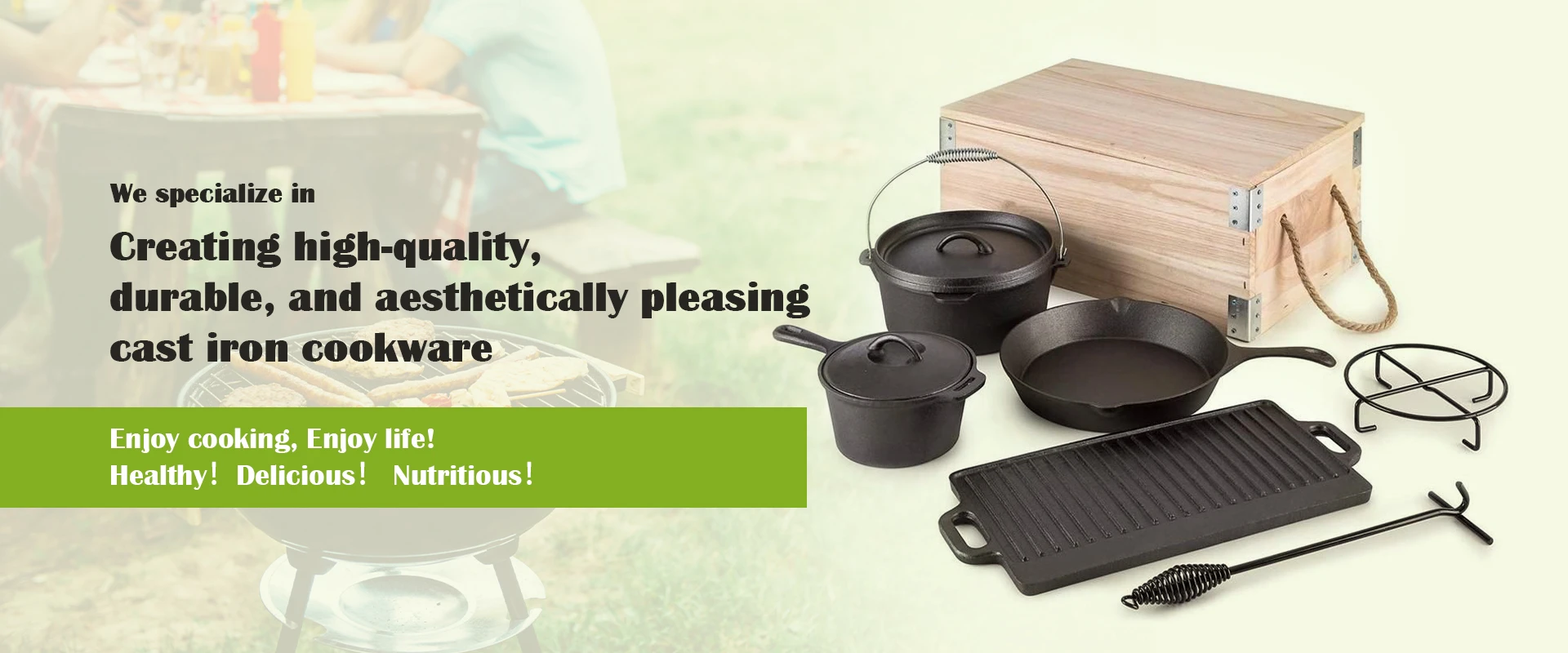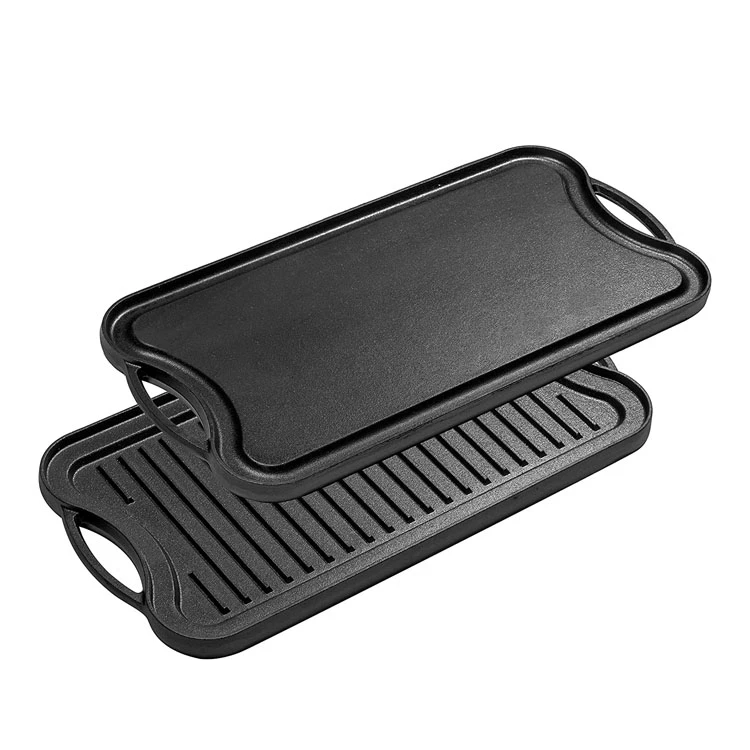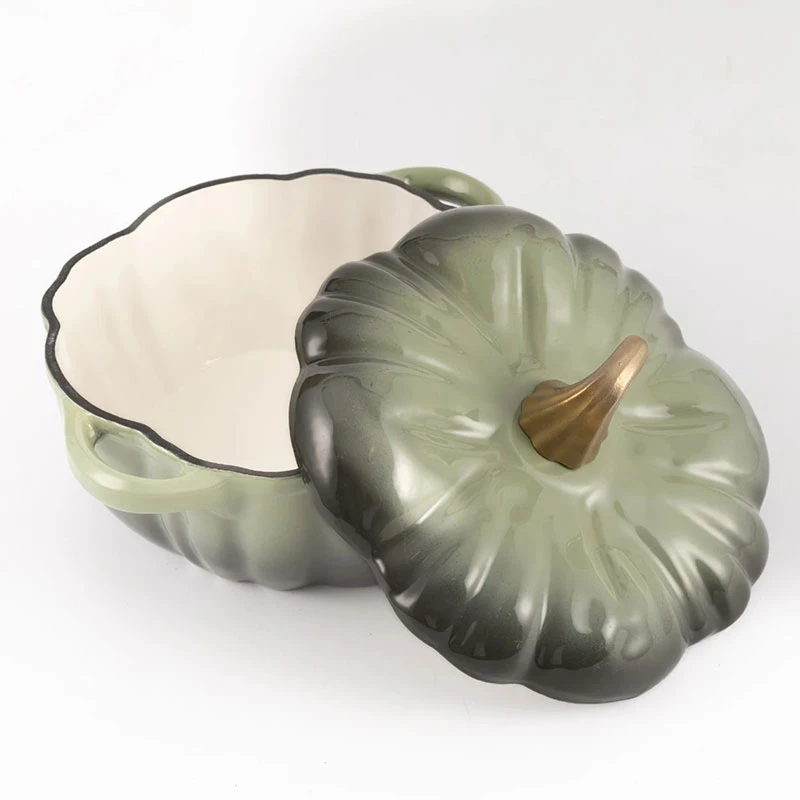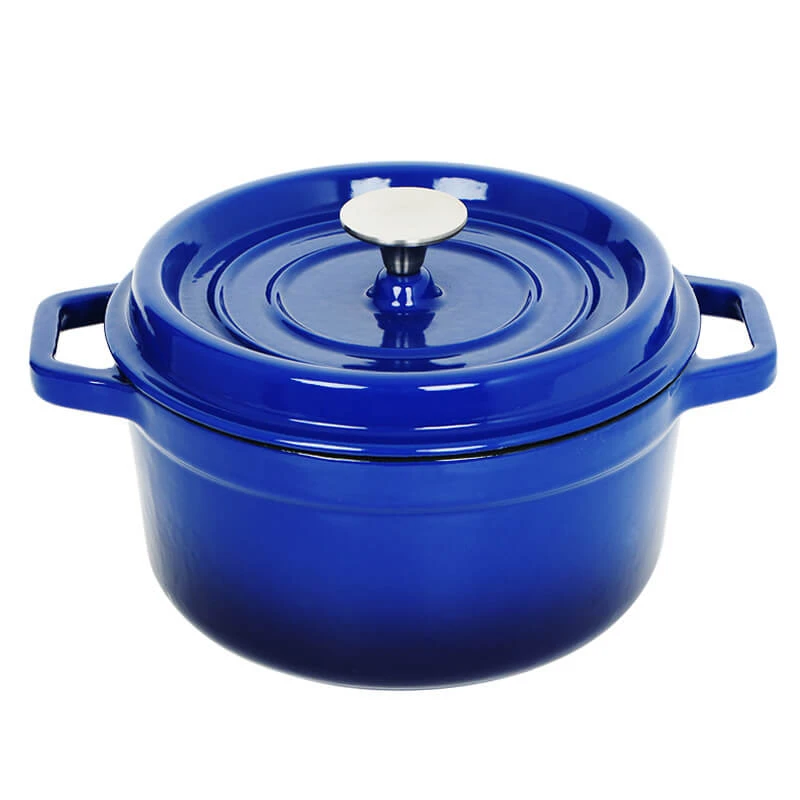
cast iron frying pan seasoning process
The Seasoning Process of Cast Iron Frying Pans
Cast iron frying pans are a staple in many kitchens around the world, celebrated for their exceptional heat retention, durability, and versatility. However, one of the key aspects of maintaining and enhancing their performance lies in the seasoning process. This article will delve into the importance of seasoning cast iron frying pans, the steps to achieve the perfect seasoning, and tips to maintain it over time.
What is Seasoning?
Seasoning refers to the process of applying a layer of fat or oil to the surface of the cast iron pan, followed by heating it to create a natural non-stick coating. The seasoning not only provides a non-stick surface but also protects the pan from rust and improves its cooking properties. A well-seasoned cast iron frying pan can develop a deep, rich patina over time, enhancing both the aesthetic and functional aspects of the cookware.
Why is Seasoning Important?
1. Protection Against Rust Cast iron is prone to rust if not properly maintained. Seasoning creates a protective barrier between the metal and moisture, preventing corrosion.
2. Non-Stick Surface Properly seasoned cast iron pans develop a natural non-stick surface that improves over time, allowing for easy cooking and cleanup.
3. Flavor Enhancement The seasoning process can also contribute subtle flavors to the food being cooked, as the oil used in seasoning permeates the cast iron.
Step-by-Step Seasoning Process
Step 1 Gather Your Materials
Before you begin, gather the materials needed a cast iron frying pan, a mild dish soap, a scrub brush or steel wool, a lint-free cloth or paper towels, and a high-smoke point oil (such as flaxseed oil, canola oil, or grapeseed oil).
Step 2 Clean the Pan
cast iron frying pan seasoning process

If your cast iron frying pan is new or has an old layer of seasoning, start by cleaning it thoroughly. Use warm water and a mild dish soap, along with a scrub brush or steel wool, to remove any factory residue or rust. Rinse the pan well and dry it completely with a lint-free cloth or paper towels.
Step 3 Apply Oil
Once the pan is clean and dry, it’s time to apply the oil. Pour a small amount of your chosen oil onto the surface of the pan and use a cloth or paper towel to spread it evenly across the entire surface, including the handle and the exterior. Be careful not to over-saturate the pan; a thin, even layer is ideal.
Step 4 Heat the Pan
Preheat your oven to a temperature between 400°F and 500°F (200°C to 260°C). Place the pan upside down on the top rack of the oven to prevent oil from pooling inside the pan. To catch any drips, place a baking sheet or aluminum foil on the lower rack.
Step 5 Bake for an Hour
Let the pan bake for about an hour. This process allows the oil to polymerize, creating a hard and durable non-stick surface. After an hour, turn off the oven and allow the pan to cool inside the oven to prevent thermal shock.
Maintenance of Seasoning
To maintain the seasoning of your cast iron frying pan, avoid using soap for regular cleaning. Instead, wipe it out with a paper towel or use hot water to remove food residue. For stuck-on food, you can gently scrub it with coarse salt and a little water. After cleaning, dry the pan completely and apply a thin layer of oil before storing it.
If you notice the seasoning starting to wear off or if rust appears, don’t hesitate to re-season the pan. After a few uses, you'll find that your cast iron frying pan not only cooks evenly but also adds a depth of flavor to your meals that cannot be matched by non-stick alternatives.
Conclusion
The seasoning process is a vital aspect of owning a cast iron frying pan. With proper care and attention, these pans can last a lifetime and become a beloved cornerstone of your kitchen. By following the seasoning steps outlined above and maintaining your pan regularly, you can ensure that it remains in optimal condition, ready to enhance your culinary creations for years to come.
-
Cast Iron Cookware Pancake Pan- ZD Cookware|Non-Stick, Even Heat, DurableNewsAug.02,2025
-
Cast Iron Cookware- Baixiang County Zhongda Machinery|Non-Stick, Heat RetentionNewsAug.02,2025
-
High Quality Kitchen Durable Black Round Cast Iron Cookware Pancake Crepe Pan With Wooden Handle|Non-Stick Surface&Heat RetentionNewsAug.02,2025
-
Authentic Traditional Chinese Wok for High-Performance CookingNewsAug.02,2025
-
Season Cast Iron Perfectly with GPT-4 Turbo TipsNewsAug.01,2025
-
High Quality Cast Iron Cookware - Baixiang County Zhongda MachineryNewsAug.01,2025


